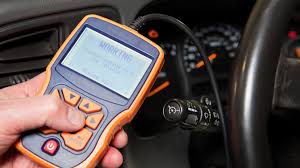Does the Car Have to Be Running to Use an OBD2 Scanner?

An OBD2 scanner is an essential tool for diagnosing vehicle issues and monitoring performance. If you’ve recently purchased or plan to use one, you might wonder: does the car need to be running for the OBD2 scanner to work? This article explores when and how to use an OBD2 scanner effectively, and whether the car needs to be running during the process.
What Is an OBD2 Scanner?
An OBD2 scanner, or On-Board Diagnostics scanner, is a device that connects to your car’s OBD2 port. It retrieves diagnostic trouble codes (DTCs) and other data from the vehicle’s electronic control unit (ECU).
Key Features of an OBD2 Scanner
- Code Reading: Retrieves error codes from the ECU.
- Live Data Monitoring: Tracks real-time engine performance metrics.
- System Testing: Runs diagnostic tests for specific components.
Does the Car Need to Be Running?
The answer depends on what you’re trying to accomplish with the OBD2 scanner:
1. When the Car Doesn’t Need to Be Running
- Reading Stored Codes: You can retrieve stored diagnostic trouble codes without the engine running. The car only needs to be in the “ON” position (with the ignition turned on but the engine off).
- Clearing Codes: Clearing DTCs doesn’t require the engine to be running.
2. When the Car Needs to Be Running
- Live Data Monitoring: To observe real-time data like engine RPM, fuel efficiency, or oxygen sensor readings, the engine must be running.
- Drive Cycle Tests: Some diagnostic tests, like emissions system checks, may require the vehicle to be running and even driving.
How to Use an OBD2 Scanner
Using an OBD2 scanner is a straightforward process, but following the proper steps ensures accurate results.
Step-by-Step Guide
- Locate the OBD2 Port
The OBD2 port is typically found under the dashboard near the driver’s side. - Plug in the Scanner
Insert the OBD2 scanner’s connector into the port securely. - Turn the Ignition On
Switch the key to the “ON” position without starting the engine. This powers the ECU and scanner. - Access the Desired Function
- For stored codes: Navigate to the “Read Codes” option.
- For live data: Start the engine to access real-time data.
- Interpret the Results
Refer to your scanner’s manual or a code reference guide to interpret the data or error codes. - Clear Codes (Optional)
If you’ve fixed the issue, you can use the scanner to clear the codes and reset the check engine light.
Tips for Effective Use
- Ensure a Stable Power Source: A weak car battery can affect the scanner’s performance.
- Use a Compatible Scanner: Not all scanners work with every vehicle. Check compatibility before purchase.
- Avoid Clearing Codes Prematurely: Clearing codes before addressing the issue can make diagnosing problems more difficult.
Benefits of Using an OBD2 Scanner
1. Cost Savings
Diagnosing issues at home can save money on repair shop diagnostic fees.
2. Convenience
An OBD2 scanner allows you to check your car’s health anytime, anywhere.
3. Preventive Maintenance
Identifying problems early can prevent costly repairs down the road.
Frequently Asked Questions
1. Can I use an OBD2 scanner while driving?
Yes, many scanners support live data monitoring while driving, but it’s essential to use them safely and avoid distractions.
2. Will using an OBD2 scanner damage my car?
No, using a scanner as intended won’t harm your vehicle. Just ensure the scanner is compatible with your car.
3. Can I diagnose all car issues with an OBD2 scanner?
While OBD2 scanners are powerful tools, they can’t diagnose all problems. For example, mechanical issues like worn-out brakes won’t be detected.
Conclusion
Whether the car needs to be running for an OBD2 scanner depends on what you’re trying to do. For reading or clearing stored codes, the ignition must be in the “ON” position, but the engine doesn’t need to run. For live data monitoring and specific tests, the engine must be running. By understanding the correct usage, you can effectively diagnose and address vehicle issues, saving time and money in the process.
Also Check:
• Does O’Reilly Have a Code Reader?
• What Does It Mean When Your Check Engine Light Is Blinking?





